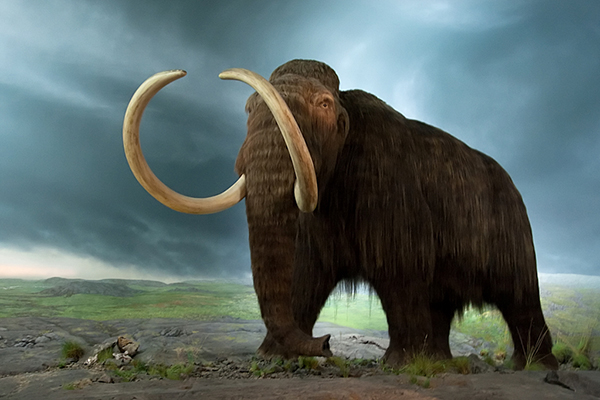February 6, 2014
Prehistoric DNA unearths the diets of ancient Arctic megafauna
A consortium of research groups, including one from University of Wollongong, has helped to create a fuller and more complete picture of the vegetation that existed across the Arctic during and after the last Ice Age and its role in the extinction of ancient megafauna, such as the iconic woolly mammoth.
The results of this study are published in the latest edition of Nature, highlighting the last 50,000 years of changes in plant life and megafauna diet across the Arctic.
By examining DNA samples from ancient plants and animals, the contributing teams of scientists have helped determine that the protein-rich herbaceous plants, or forbs, that were once plentiful across the Arctic were massively reduced during the coldest part of the last Ice Age, 25,000 to 15,000 years ago. The loss of these forbs, which were a staple food for large creatures such as woolly mammoths, woolly rhinoceros and horses, never recovered afterwards, leaving instead a landscape dominated by low protein grasses, which contributed to the extinction of these giant animals.
Professor Eske Willerslev, an ancient DNA expert and Director of the Centre for GeoGenetics at the Natural History Museum of Denmark, led the decade-long project. Professor Willerslev said: "We knew from our previous work that climate was driving fluctuations of the megafauna populations, but [we didn't know] how. Now we know that the loss of protein-rich forbs was likely a key player in the loss of the Ice Age megafauna." And he warned that “one can also see our results in the perspective of the present climate changes. Maybe we get a hold on the greenhouse gases in the future. But don’t expect the good old well-known vegetation to come back when it becomes cooler again after the global warming.”
Professor Richard ‘Bert’ Roberts, Australian Laureate Fellow and Director of the Centre for Archaeological Science led the UOW team that helped collect and date some of the ancient DNA samples from Siberia.
"Previous inferences of plant abundance were based mostly on the detection of species from pollen spores and the rarer occurrence of macroscopic bits of vegetation, such as seeds and twigs. But not all plants produce abundant pollen, so the record can get skewed towards the prolific pollen-producing plants, such as grasses and sedges. By contrast, forbs are not prolific pollen producers, so their presence is under-represented in the pollen record,” Professor Roberts said.
“The ancient DNA record shows that forbs were very abundant for 40,000 of the last 50,000 years. In fact, grasses only become dominant in the last 10,000 years, so the popular image of the Arctic megafauna as heavy consumers of grass is not true – they actually ate lots of forbs, too."
Thirty teams of scientists from 12 countries contributed to this project and it is an example of how scientists across many scientific fields and from different parts of the world can work together. Co-author Dr Pierre Taberlet, an ecologist at the French National Centre for Scientific Research said: "The results presented in this paper would have never been obtained without a very broad collaboration … Competition among scientists often is believed to be the main stimulus promoting global scientific output. This study clearly demonstrates that extensive collaboration is a viable alternative."
